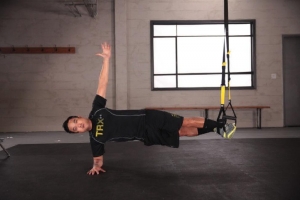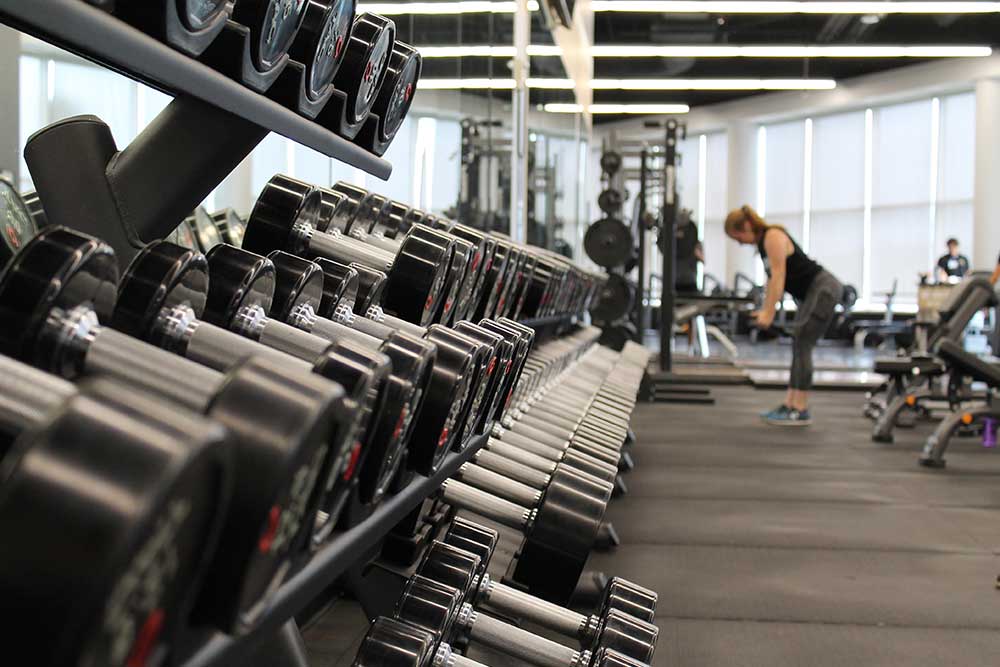Plyometric Training to Enhance Performance

Hunter Bennett
When it comes to maximizing the athletic performance of any sporting endeavor, it is in your best interest to find and use training methods that provide you with the most bang for your buck. This is ultimately why strength training has become an integral component of literally every athlete’s training regime – because it works, and it works extremely well.
However, many individuals find themselves falling into the trap where they firmly believe that strength training alone will provide them with all the benefits they need.
Which certainly isn’t the case.
There is a need to employ a variety of training methods to ensure that all facets of physical performance are enhanced in an optimal manner – which is exactly where plyometric training enters the discussion.
What is Plyometric Training?
 Plyometric training (commonly known as ‘plyometrics’) is a unique method of training that is built around jumping, hopping, bounding and, or skipping movements, performed in an extremely explosive manner.
Plyometric training (commonly known as ‘plyometrics’) is a unique method of training that is built around jumping, hopping, bounding and, or skipping movements, performed in an extremely explosive manner.
Plyometric training differs significantly from other power-based training methods as it involves rapid and repeated contacts with the ground, in which body weight is strictly used as the primary source of external load.
This method of training is extremely beneficial as it takes advantage of what is known as the ‘stretch-shortening cycle’ (SSC).
During athletic movements that require rapid ground contacts such as sprinting, changing direction, jumping, and bounding, the muscle undergoes a rapid eccentric contraction, followed by a short transitional period, before it then moves into a state of rapid concentric contraction.
This process of eccentric contraction, transitional phase, and concentric contraction, describes the SSC in full (Lloyd et al., 2012).
Related Article: Maximize Athletic Performance with the Hip Thrust
How Does Plyometric Training Enhance Performance?
There has been an abundance of research looking into the effects of plyometric training at a mechanical level, and the results have been interesting, to say the least.
You see, plyometric training elicits neurophysiological changes to both the muscle and tendinous tissue – thus causing significant improvements in the body’s ability to use the SSC during athletic movements.
These include:
- The improved capacity to store and use the elastic energy produced during the eccentric portion of muscle contraction (Bojsen-Moller et al., 2005)
- Improved force production across a broader joint range of motion (Bobbert & Casius, 2005)
- Enhanced motor unit firing and coordination (Bobbert & Casius, 2005)
By improving upon these three specific qualities, plyometric training results in an increase in muscle stiffness during ground contacts, which also enhances the muscles’ ability to produce force during the concentric portion of muscle contraction.
These changes in neuromuscular function lead to an increased rate of force development combined with a significant reduction in ground contact times during movement, leading to more explosive, powerful, and rapid athletic movements.
And the results?
Vastly improved speed, acceleration, change of direction capacity, and jumping performance – all of which are obviously integral to successful explosive athletic performance (Chelly et al., 2014; Michailidis et al., 2013; Martel et al., 2005).
Interestingly, the appropriate application of plyometric training has also been shown to cause significant improvements in endurance performance by enhancing running economy – suggesting a place in the endurance athletes training program as well (Spurrs, Aron, and Mark, 2005).
How do I Implement Plyometric Training?

Despite the lack of external load used with plyometric exercises, they are still extremely taxing. They require you to mover your body mass at an extremely rapid rate, and moreover, they induce a large amount of eccentric load each and every repetition.
Additionally, many plyometric exercises have a rather large skill component that is integral to their safe and effective completion. As such, some plyometric movements can have a rather steep learning curve, and therefore require a high attention to detail.
Taking all of this into consideration, plyometric training needs to be introduced and programmed appropriately.
Progress from Least to Most Demanding
This is an obvious point, but it still requires attention.
It is in our best interest to start with movements that elicit minimal ground reaction forces, and therefore place the body under the least amount of stress. These include simple jumping exercises that are performed in place (such as squat jumps and split squat jumps) or controlled lateral bounds.
Once you have become competent at these movements, you can naturally progress into more demanding jumps and bounds performed with maximal intensity (such as tuck jumps, repeated broad jumps, and explosive lateral bounds).
And finally, the most advanced variations of these exercises involve single leg variations of the above jumps performed with maximal intensity and jumps that involve commencing the jump on an elevated surface, thus increasing the ground reaction force and the eccentric load of the exercise (such as depth jumps).
Now, these movements are extremely demanding from both a mechanical and skill-based perspective, and as such should not be implemented until you feel confident in your ability to perform its precursors in an efficient manner.
Related Article: Maximize Performance With Plyometrics and HIIT
Start with Assisted Plyometric Exercises
Assisted plyometric exercises are a fantastic way to start introducing plyometric training into your routine. The above movements can be used in conjunction with a TRX suspension trainer to limit the skill component involved with the exercise.
While most people think of TRX training as a way to enhance stability, in this manner it offers the perfect piece of plyometric training equipment. As a result, it allows you to focus solely on the power production component of plyometric training while allowing you to take the time to develop the skill component.
Don’t Neglect Strength Training
Plyometric training enhances the speed at which you can produce force. As a result, for this training modality to be effective, you actually need to be able to produce a large amount of force in the first place.
This means that plyometrics typically become more useful the stronger that you become (and the greater your absolute force production capacity is) (Haff and Nimphius, 2012).
As such, plyometrics are best utilized in conjunction with traditional strength training methods. This ensures that you are enhancing both your ability to produce force and your ability to express that force as quickly as possible.
Building on this notion a little further, plyometric exercises should be performed at the start of your training session, before any strength training.
Plyometric Training Routines
I can appreciate the above contains a large amount of information.
So, we wanted to provide you with some sample routines that you can begin to implement into your training regime immediately. Each of these routines revolves around an increasing degree of plyometric demand.
Moreover, each week the exercises themselves also progress in difficulty.
Rest periods should be 60 seconds between the sets of a given exercise, and 2 minutes between the different exercises. It is important to note that while this routine does provide a simple method of implementing plyometrics into your training, it may not be suitable for everybody. When in doubt, stick with those exercises that feel comfortable and make sure you progress slowly.
It is important to note that while this routine does provide a simple method of implementing plyometrics into your training, it may not be suitable for everybody. When in doubt, stick with those exercises that feel comfortable and make sure you progress slowly.
Conclusion
Plyometric training offers an excellent training method that enhances your rate of force development dramatically. As a result, it can increase nearly all aspects of athletic performance, offering an extremely beneficial training modality for individuals from all sporting backgrounds.
However, it is important to note that plyometric training can be extremely demanding – both mechanically, and from a skill-based perspective.
We strongly recommended that you start with those plyometric exercises that elicit minimal ground reaction forces and have minimal skill demands before progressing onto more challenging variations.
Alternatively, specialist plyometric training equipment (such as the TRX trainer) can be implemented to reduce the skill demands associated with specific plyometric movements, making it easier to transition into more skill-based movements while simultaneity maximizing power development.
References
Lloyd, S., et al. “The effects of 4-weeks of plyometric training on reactive strength index and leg stiffness in male youths.” The Journal of Strength & Conditioning Research26.10 (2012): 2812-2819.
Bojsen-Møller, Jens, et al. “Muscle performance during maximal isometric and dynamic contractions is influenced by the stiffness of the tendinous structures.” Journal of Applied Physiology 99.3 (2005): 986-994.
Bobbert, R and Casius A. “Is the effect of a countermovement on jump height due to active state development?.” (2005).
Chelly, S., et al. “Effects of 8-week in-season plyometric training on upper and lower limb performance of elite adolescent handball players.” The Journal of Strength & Conditioning Research 28.5 (2014): 1401-1410.
Michailidis, Y., et al. “Plyometrics’ trainability in preadolescent soccer athletes.” The Journal of Strength & Conditioning Research 27.1 (2013): 38-49.
Martel, F., et al. “Aquatic plyometric training increases vertical jump in female volleyball players.” Medicine and science in sports and exercise 37.10 (2005): 1814-1819.
Spurrs, R., Aron, J, and Mark, W. “The effect of plyometric training on distance running Performance.” European journal of applied physiology 89.1 (2003): 1-7
Haff, G and Nimphius, S. “Training principles for power.” Strength & Conditioning Journal 34.6 (2012): 2-12.
You Might Like:
















